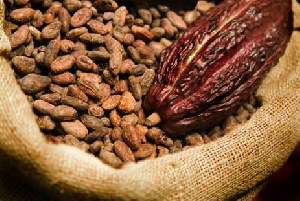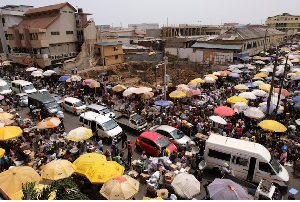As much as US$517million could be raised annually by addressing the country’s cocoa smuggling menace, a study by Public Interest Law (CEPIL) has revealed.
This amount, the report said, is enough to pay for 20 units of 80-bed capacity hospitals. The report also said government’s numerous interventions at boosting production of the commodity are not yielding the needed results as expected, with 200,000 metric tonnes of the commodity lost to smuggling yearly.
Cocoa-smuggling is a major challenge frustrating efforts to improve the sector’s contribution to the economy. As the second-largest producer of cocoa in the world – after Côte d’Ivoire, with a market share of about 20 percent, the cash crop’s contribution to GDP in 2021 was around US$533million. It also contributes significantly to the country’s total foreign exchange earnings, second only to mineral exports.
These were revealed at a workshop organised in Accra by CEPIL in collaboration with Oxfam-Ghana to unveil a study on Ghana’s cocoa and extractive sector, titled ‘Addressing Policy Gaps in the Cocoa and Mining Sector Value Chains’ and held in Accra.
Findings
With respect to the threat of small-scale mining to cocoa farming, it cited money as the key motivating factor influencing farmers’ decision to allow their farms to be used for mining activities. While younger farmers demonstrated willingness toward giving out their farms for mining, the study however revealed that those above 59 years were against doing so.
It also cited low prices, inadequate labour, galamsey, low soil fertility, pest and diseases and many others as challenges facing the sector.
In addition, it established that 97 percent of the commodity’s farmers are aware of ongoing input subsidy programmes, but raised concerns about difficulty in accessing the subsidized fertiliser.
In an interview with B&FT after the workshop, Alhassan Iddrisu – a legal practitioner with CEPIL who presented the report, noted the fact that cocoa farmers are contemplating giving their farms out for mining tells a lot about the situation.
Recommendations
The study called for measures to address subsidy issues, access to farm inputs and the price at which government buys the commodity from farmers, as a way to increase benefits to the state.
While stressing the need to look at benefits that accrue to cocoa farmers in the value chain, Mr. Iddrisu called on government and industry players to address the gender inequity that exists in the industry. “There is unequal opportunity between men and women when it comes to cocoa farming. Access to land for farming, credit and farm inputs such as fertiliser, pesticide among others remain a challenge to women in particular,” he elaborated.
Mining
Touching on mining, the study indicated that the extractives remain the largest tax paying sector in the country, with significant contribution to its gross domestic product (GDP) and gross merchandise exports. It said the artisanal and small-scale mining sector alone employs approximately 1 million people in the country, with an additional 5 million peoples’ livelihoods depending on its proceeds.
Although artisanal and small-scale mining accounts for 40 percent of gold produced in Ghana, making it an attractive sector for revenue generation, the report said tax evasion and smuggling are some of the major factors affecting the Ghana Revenue Authority’s (GRA) ability to meet its tax targets in the sector.
He recommended an amendment of some provisions in the sector’s local content policy: “Going through the local content policy of Ghana in the mining sector, there is absolutely no mention of benefits for women and persons with disability (PWDs) – but this is local content, and we feel it must be amended to make provision for specific benefits that improve women and PWDs’ access to opportunities in the sector”.
The study’s aim was to identify inherent issues affecting cocoa and mining value chains, while addressing inequity and access to opportunities for men and women as well as persons with disability – especially in the extractives sector.
Business News of Monday, 4 December 2023
Source: thebftonline.com

















